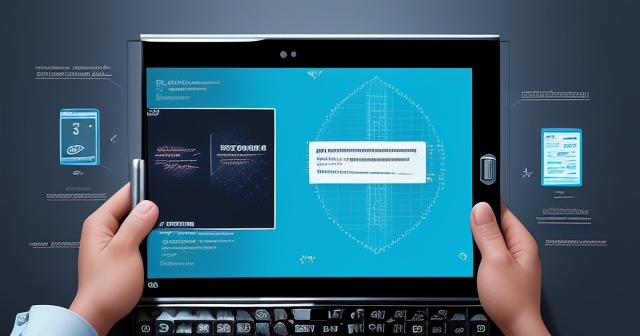Navigating the Shifting Landscape: A Deep Dive into BlackBerry (BB) Stock for Investors and Traders
Hello there! We’re here to explore the fascinating, sometimes complex, world of investing and trading, and today, we’re turning our attention to a company that has undergone a remarkable transformation: BlackBerry Limited, trading under the ticker symbol BB.
You might remember BlackBerry from its iconic smartphones – devices that reshaped mobile communication. But the BlackBerry of today is a fundamentally different entity, firmly rooted in the realm of enterprise software, cybersecurity, and the burgeoning Internet of Things (IoT). This strategic pivot presents both unique opportunities and significant challenges for anyone looking to understand its stock. Our goal in this comprehensive guide is to help you, whether you’re just starting out or looking to refine your trading approach, understand the key factors influencing BB’s stock performance, from its core business and financial health to market dynamics and analytical signals. Think of us as your guide through this intricate territory, breaking down complex concepts into understandable insights.
In the world of trading, knowledge isn’t just power; it’s the bedrock of successful decision-making. Understanding the ‘why’ behind price movements, financial reports, and market sentiment is crucial. So, let’s embark on this journey together, uncovering the layers that make up the investment case for BlackBerry.
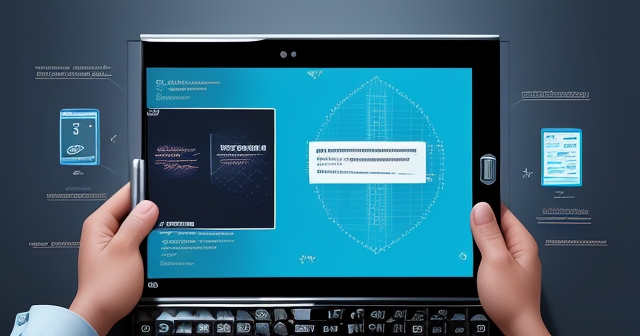
BlackBerry’s Strategic Metamorphosis: From Consumer Gadgets to Enterprise Intelligence
The first crucial step in analyzing BB stock is to truly grasp what the company does *today*. Forget the physical keyboards and BBM chats of yesteryear. BlackBerry is now a software and services company specializing in intelligent security, leveraging advanced technologies like Artificial Intelligence (AI) and Machine Learning (ML). Its focus is squarely on providing solutions for businesses and governments that demand high levels of security, safety, and data privacy.
BlackBerry structures its operations primarily into three key segments: Secure Communications, IoT (Internet of Things), and Licensing. The Secure Communications segment offers solutions for endpoint security and management, including products like BlackBerry UEM, AtHoc (critical event management), and SecuSUITE (secure voice and text). These are vital tools for organizations protecting sensitive data and communications.
Below are the main segments of BlackBerry’s operations:
- Secure Communications: Endpoint security and management solutions.
- IoT (Internet of Things): Focused on embedded systems and automotive applications.
- Licensing: Monetizing its patent portfolio and intellectual property.

The IoT segment is perhaps the most discussed area of potential growth. This includes QNX, a leading embedded operating system widely used in critical systems, most notably in the automotive industry for infotainment, digital cockpits, and advanced driver-assistance systems (ADAS). Other IoT products like Certicom (encryption), Radar (asset tracking), and the newer IVY (vehicle data platform developed with Amazon Web Services) fall under this umbrella. The automotive space represents a significant market for BlackBerry’s embedded software expertise.
The Licensing segment, while historically significant due to patent portfolios, is evolving, as we’ll discuss later. But the core narrative is clear: BlackBerry is positioning itself as a critical player in high-growth, high-security enterprise and embedded software markets.
| Segment | Description |
|---|---|
| Secure Communications | Endpoint security and management solutions. |
| IoT | Applications in automotive and other industries. |
| Licensing | Monetizing patents and intellectual property. |
The company has articulated ambitious strategic goals, including targeting over $1 billion in annual revenue by fiscal year 2027 and aiming to approach breakeven adjusted per-share earnings by fiscal year 2024. These targets provide investors with specific benchmarks to monitor the company’s progress in its strategic pivot.
Understanding this fundamental shift is paramount. You’re not investing in a consumer electronics company; you’re evaluating a B2B technology provider with a focus on niche, high-value areas like automotive software and enterprise cybersecurity. Does their technology stack up against competitors? Are they effectively executing their sales strategy in these complex markets? These are the kinds of questions this strategic overview helps us ask.
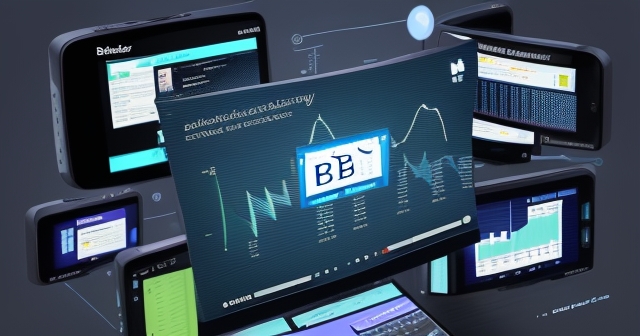
Unpacking BB’s Recent Financial Performance: Challenges and Progress
Numbers tell a story, and BlackBerry’s recent financial results paint a picture of a company in transition, grappling with the realities of building new revenue streams while managing legacy costs. We often see headlines highlighting quarterly results, but it’s crucial to look beyond just whether they “beat” or “missed” analyst estimates. What do the underlying figures reveal?
Looking at recent history, like Q3 2022 (based on the provided data context), we saw BlackBerry sometimes topping analyst *expectations* regarding revenue or loss per share. However, importantly, the company still often reported a net loss. What does this mean? It suggests that while they might be performing slightly better than what Wall Street analysts specifically modeled for that quarter, the business is not yet profitable on a GAAP (Generally Accepted Accounting Principles) basis.
| Metric | Value |
|---|---|
| Market Cap | $2.02 billion to $2.6 billion |
| Shares Outstanding | 580-596 million |
| Public Float | 571 million |
Forecasts cited in the data indicate expectations of continued net losses through fiscal year 2025. This is a significant point for investors focused on profitability. It means analysts, on average, don’t expect the company to be making money in the near term. However, there are improving trends projected, with an expectation of achieving positive cash flow from operations in fiscal year 2025. Positive operating cash flow is a crucial milestone, indicating that the core business is generating enough cash to cover its day-to-day expenses, even if accounting profits (which include non-cash items like depreciation and amortization) are still negative. It’s a step towards financial self-sufficiency.
When you analyze these financial reports, look for trends in revenue within each segment (Secure Comms, IoT, Licensing). Is the growth in IoT strong enough to offset potential declines in legacy areas? How are their margins improving or deteriorating? Pay attention to operating expenses – is the company managing costs effectively as it invests in R&D and sales for new products?
Understanding these dynamics helps you assess the execution of BlackBerry’s strategy. Are the promising areas like QNX and IVY translating into meaningful revenue growth? Is the path to profitability, symbolized by the breakeven target for FY2024 and positive cash flow for FY2025, still viable based on the latest reports?

Delving into Key Financial Health Metrics: A Trader’s Toolkit
Beyond the income statement, several financial metrics offer crucial insights into a company’s health, valuation, and risk profile. Let’s explore some key figures provided in the data and understand what they can tell us about BB stock.
We see a Market Cap ranging from approximately $2.02 billion to $2.6 billion (based on the data context). This is the total market value of the company’s outstanding shares. It gives us a sense of the company’s size but doesn’t tell us if it’s “cheap” or “expensive.”
The Shares Outstanding (approx. 580-596 million) and Public Float (approx. 571 million) indicate the supply of shares available for trading. A large float generally means higher liquidity, making it easier to buy and sell without significantly impacting the price.
| Valuation Metric | Current Status |
|---|---|
| PE Ratio | N/A |
| EPS | Negative TTM |
| Forward P/E | 35.79 |
| Price/Sales | 3.51 |
| Price/Book | 2.82 |
Profitability ratios also reflect the current state:
- ROI (Return on Investment): -5.68%
- ROE (Return on Equity): -4.20%
Negative ROI and ROE metrics are consistent with the company’s net losses. They show that, currently, the company is not generating positive returns from its investments or shareholder equity. For these to turn positive, the company needs to achieve consistent profitability.
Debt levels are also important. The data shows Debt/Equity (Total & Long Term) around 27%. This ratio measures how much debt a company is using to finance its assets relative to shareholder equity. A 27% Debt/Equity ratio is generally considered moderate. It suggests the company isn’t excessively leveraged, which can be a positive sign for financial stability, but it’s always worth examining the nature of the debt and the company’s ability to service it.
Finally, let’s look at volatility. BB has a Beta of 1.30. Beta is a measure of a stock’s volatility in relation to the overall market (like the S&P 500). A Beta of 1.30 means that, statistically, BB stock tends to be 30% more volatile than the broader market. When the market goes up by 1%, BB might tend to go up by 1.3%, but crucially, when the market goes down by 1%, BB might tend to go down by 1.3%. This makes BB a potentially higher-risk, higher-reward stock, heavily influenced by overall market sentiment. Trading BB requires an awareness of broader market movements due to its elevated Beta.
The Analyst Consensus and Divergent Price Targets: Interpreting Wall Street’s View
Market analysts spend their careers evaluating companies and making forecasts. Their opinions, often summarized as ratings (Buy, Hold, Sell) and price targets, can influence investor sentiment and stock prices. However, it’s vital to remember that these are just *opinions* based on *models* and *assumptions* about the future, which may or may not come true. The provided data shows a range of analyst perspectives on BB.
Overall analyst sentiment appears mixed, leaning cautious. Across various sources, ratings include Sell, Underperform, Hold, Overweight, and Buy. For example, one source might show ratings from 6 analysts, while another lists 9, leading to slightly different overall pictures or consensus ratings.
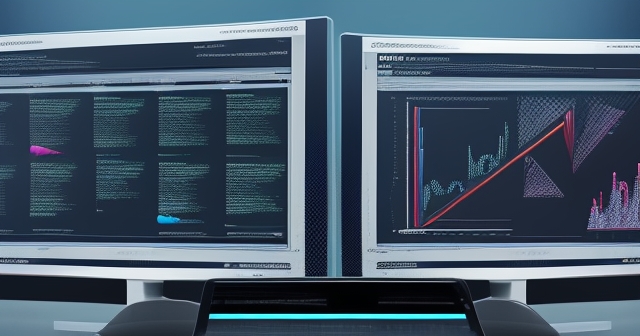
Specific examples highlight this divergence. Argus Research explicitly rated BB as a SELL with a target price of $3.00 (based on data around Feb 2023). This is a clear signal from one firm expecting significant downside from the stock’s price at that time. In contrast, another source indicated a higher 1-year target estimate of $4.95. This difference is substantial and highlights the uncertainty surrounding BB’s future performance. The mean analyst rating from one source was 3.00, which typically corresponds to a “Hold” or neutral rating on a scale where 1 is a strong buy and 5 is a strong sell.
What causes these differences? Analysts might have different projections for BlackBerry’s revenue growth in key segments (IoT vs. Secure Comms), different assumptions about when the company will become profitable, different views on the total addressable market for its products, or different discount rates used in their valuation models. Macroeconomic outlooks and competitive pressures also play a significant role.
Furthermore, Fair Value estimates derived from quantitative models can offer another perspective. The data noted one model suggesting the stock might be Overvalued, estimating a potential -46% return based on that model’s calculation of fair value. Quantitative models rely purely on financial data and formulas, offering a different lens compared to analyst opinions which might incorporate qualitative factors like management quality or market trends.
As an investor or trader, how should you use analyst ratings and price targets? Don’t take them as gospel. Use them as *inputs* into your own analysis. Understand *why* an analyst has a particular rating or target. Do you agree with their assumptions about growth, profitability, or market conditions? Pay attention to changes in ratings or targets, as these can signal shifts in expert opinion. But always, always, do your own research and form your own conclusions.
The mixed and sometimes conflicting views on BB from the analyst community underscore the transitional and uncertain nature of the company’s current state. There isn’t a clear consensus, which often leads to higher stock price volatility as different market participants trade on differing expectations.
Pivotal Corporate Events Shaping BB’s Path: Beyond the Daily Numbers
A company’s journey isn’t just about its quarterly financials; significant corporate events can fundamentally alter its trajectory, balance sheet, or public perception. BlackBerry has seen several such events recently that warrant close attention.
One major development was the agreement to settle a securities class action lawsuit for $165 million. Legal disputes, especially class actions, can hang over a company for years, creating uncertainty about potential liabilities and legal costs. Agreeing to a settlement, while expensive, can remove this overhang. It allows the company to close a chapter and focus its resources elsewhere. For investors, it removes a specific risk factor, making the company’s future financial picture slightly clearer, though the $165 million outflow impacts cash reserves.
Another area of significant activity has been around BlackBerry’s valuable portfolio of legacy patents. The company announced the sale of these patents for $600 million to Catapult IP Innovations. This was intended to monetize non-core assets and provide a substantial cash injection. However, the data mentions news of exploring other sale options after the transaction closing was prolonged. This indicates that the initial deal faced hurdles. Managing and monetizing intellectual property (IP) is a strategic lever for tech companies, and the complexities around this patent sale highlight potential challenges in extracting value from these assets. Successful completion of a patent sale could significantly boost cash flow, while delays or alternative options introduce uncertainty.
| Event | Impact |
|---|---|
| Securities Class Action Lawsuit Settlement | Removal of potential liabilities enhances clarity. |
| Patent Sale to Catapult IP Innovations | Monetization of assets provides cash but raises uncertainties. |
On the positive side, recent news highlights from events like CES (Consumer Electronics Show) often feature developments related to BlackBerry’s automotive technologies and partnerships. Announcements about new design wins for QNX, collaborations on the IVY platform, or integrations with major automakers or tech companies can be significant drivers for the IoT segment’s growth prospects. These events provide glimpses into the traction BlackBerry is gaining in its target markets and validation from industry players. You should look for concrete details behind these announcements – which partners, what products, what’s the potential revenue impact?
These corporate events – resolving legal issues, managing IP assets, and announcing strategic partnerships – are not just news headlines. They directly impact BlackBerry’s financial position, strategic focus, and the market’s perception of its future potential. They are critical pieces of the puzzle when evaluating the investment case.
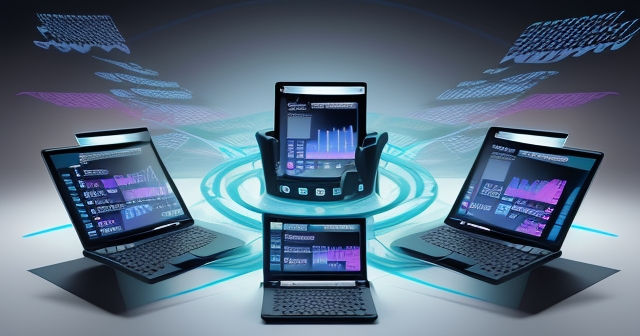
Understanding Trading Dynamics: Volatility, Volume, and Short Interest
Stepping into the realm of trading, we need to look beyond just the fundamental health of the company and consider the mechanics of the stock itself. How does BB stock actually trade on a day-to-day basis? The data provides several clues.
Its recent stock performance shows significant volatility. We see a large YTD (Year-to-Date) gain (e.g., 33.90% as of Feb 6, 2023) contrasted sharply with a substantial 1-Year loss (e.g., -39.71% as of Feb 6, 2023). This kind of whipsaw movement is characteristic of high-Beta stocks like BB (remember its Beta of 1.30). It means the stock can experience large swings in relatively short periods, often amplified by broader market movements or company-specific news.
Understanding trading data like Previous Close, Open, Day’s Range, and 52 Week Range is fundamental. The Day’s Range shows you the high and low the stock traded at within a single day, giving a sense of intraday volatility. The 52 Week Range provides a broader perspective on how the stock has performed over a full year, showing its peaks and troughs.
| Trading Metric | Value |
|---|---|
| YTD Gain | 33.90% |
| 1-Year Loss | -39.71% |
| Short Interest | 4.90% of float |
Volume – the number of shares traded in a given period – is another critical metric. High trading volume suggests strong market interest and liquidity. It can also help confirm price movements; a large price move on high volume is generally considered more significant than one on low volume. Average Volume gives you a benchmark to compare daily volume against, helping identify unusually high or low trading activity.
Finally, Short Interest is worth monitoring. The data noted Short Interest at 4.90% of the float (as of Jan 2023). Short interest represents the percentage of a company’s publicly traded shares that have been sold short (i.e., investors betting the price will fall). A high short interest percentage can indicate significant bearish sentiment among some traders. While 4.90% isn’t extremely high, it’s a measurable portion and worth noting. Historically, BB has been mentioned in the context of “meme stocks,” where exceptionally high short interest combined with coordinated retail buying led to dramatic short squeezes. While 4.90% is far from the levels seen during peak meme stock frenzy, it’s a factor that contributes to the trading dynamic.
These trading dynamics tell us that BB stock is not for the faint of heart. Its high Beta means it will likely move more dramatically than the overall market. Its trading volume and short interest levels reflect ongoing market debate and positioning around the stock.
Exploring Technical Indicators for BB Stock: Reading the Charts
While fundamental analysis (like reviewing financials and strategic goals) focuses on the intrinsic value of a company, technical analysis focuses on price and volume patterns to predict future price movements. It’s based on the idea that all known information is reflected in the price and that prices move in trends.
The provided data briefly mentions technical analysis, noting a “bearish pattern detected” and referencing the Commodity Channel Index (CCI). What do these mean in practice, and how can you incorporate technical analysis into your approach?
A “bearish pattern” refers to formations on a price chart that technical analysts interpret as signals for potential price declines. These patterns can range from simple ones like ‘head and shoulders’ or ‘double tops’ to more complex indicators generated by algorithms. Identifying a bearish pattern suggests that, based purely on the stock’s price history, there’s an increased probability of downward movement.
The Commodity Channel Index (CCI) is a momentum-based oscillator used to identify cyclical trends. It measures the current price relative to its average price over a given period. A high CCI reading typically suggests the price is far above its average (potentially overbought), while a low reading suggests it’s far below its average (potentially oversold). Traders use CCI to spot potential trend reversals or confirm trend strength. If the CCI was referenced in conjunction with a “bearish pattern,” it might have been generating a signal consistent with downward momentum or an overbought condition potentially leading to a reversal.
Technical analysis provides a different lens from fundamentals. It helps traders determine optimal entry and exit points, set stop-loss levels to manage risk, and identify potential support and resistance levels where the price might pause or reverse. Support is a price level where buying interest is strong enough to prevent the price from falling further, while resistance is a level where selling pressure is strong enough to prevent the price from rising higher.
It’s important to understand that technical analysis is often best used in conjunction with fundamental analysis. Fundamentals help you decide *what* to buy or sell, while technicals can help you decide *when*. Different traders use different indicators and patterns, and what works for one might not work for another. If you’re new to technical analysis, start by learning the basics of charts (candlesticks, bar charts), trends, support and resistance, and common indicators like Moving Averages, RSI, and MACD, before diving into more complex ones like CCI or specific pattern recognition. Resources abound, and practicing on historical data can build your understanding.
Applying technical analysis to BB stock, with its noted volatility and potential patterns, requires careful observation and understanding of chart dynamics. It’s a skill that improves with practice and experience.
The Role of AI in Generating Trading Signals: A Look at Algorithmic Insights
In the increasingly data-driven world of finance, Artificial Intelligence (AI) and machine learning are being applied to predict market movements and generate trading signals. The provided data references AI-generated signals and trading plans, showing ratings for different timeframes: Near Neutral, Mid Weak, and Long Strong.
How do AI signals work? They use complex algorithms to analyze vast amounts of data – including price history, volume, news sentiment, social media trends, and even macroeconomic data – looking for patterns and correlations that might not be obvious to human analysts. Based on these patterns, the AI generates signals recommending a buy or sell action, often with suggested entry points, stop-loss levels (to limit potential losses), and target prices (where to consider selling for a profit).
The signals for BB stock presented in the data offer a fascinating perspective: a potentially weak outlook in the mid-term but a strong outlook in the long term. This divergence mirrors some of the uncertainty we see in analyst ratings and reflects the company’s current transitional phase. An AI might identify short-term headwinds (like current unprofitability or market volatility) but see strong long-term potential based on the growth trajectory of its target markets (IoT, cybersecurity) and strategic initiatives.
AI-generated signals can be valuable tools, offering potentially objective, data-driven insights and the ability to process information faster than humans. They can help identify potential trading opportunities you might otherwise miss.
However, it is absolutely crucial to approach AI signals with a critical mindset. They are based on historical data and programmed assumptions. They can be susceptible to market regime changes (when the underlying market dynamics shift, making historical patterns less reliable), data biases, and the inherent unpredictability of future events. AI is a tool, not a crystal ball. It provides probabilities, not certainties.
If you choose to incorporate AI signals into your trading, treat them as *one* input among many. Understand the methodology behind the signals if possible. Do they align with your fundamental analysis of the company? Do they make sense in the context of current macroeconomic conditions? Always use proper risk management techniques, including stop-loss orders, regardless of how confident an AI signal might appear. Integrating AI requires understanding its strengths and, more importantly, its limitations.
Macroeconomic Headwinds and Tailwinds for BB Trading: The Bigger Picture
No stock exists in a vacuum. Even the most promising company’s performance is heavily influenced by the broader economic environment. For a stock like BB, which is undergoing a transformation and has a relatively high Beta, understanding the macroeconomic context is particularly important.
The provided data includes headlines touching upon major macroeconomic themes like Fed interest rates, inflation data (CPI/PCE), recession fears, jobs reports, and stock market sell-offs/rallies. How do these seemingly distant factors impact BB?
Interest Rates: When the Federal Reserve (Fed) raises interest rates, it increases the cost of borrowing for companies and consumers. This can slow down economic growth. Higher interest rates also make “safer” investments like bonds more attractive relative to riskier assets like stocks, particularly growth stocks whose valuations rely heavily on future earnings potential discounted back to the present. For BB, higher rates could impact its cost of capital and potentially slow down enterprise spending on its software, though cybersecurity and essential IoT functions might be more resilient.
Inflation (CPI/PCE): High inflation erodes purchasing power and can lead central banks to raise rates aggressively. While BB isn’t directly selling consumer goods affected by CPI, inflation impacts its operating costs and the broader economic environment its customers operate in. The “sticky inflation” mentioned in headlines suggests inflation is proving persistent, requiring continued hawkish action from the Fed, which in turn pressures growth stocks.
Recession Fears: Talk of a potential recession significantly impacts market sentiment. During economic downturns, companies often cut back on spending, which could affect demand for BlackBerry’s enterprise software and IoT solutions. Recession fears tend to lead to risk-off sentiment in markets, pushing investors away from volatile stocks like BB towards safer havens. The data references “Recession Watch” and different scenarios like “Hard Landing” or “No Landing,” highlighting the uncertainty surrounding the economic outlook.
Jobs Reports: Strong jobs reports can be a double-edged sword. They signal economic health, which is generally positive. However, in an inflationary environment, strong wage growth can fuel further inflation, potentially forcing the Fed’s hand on interest rates. A robust labor market is good for demand, but its inflationary implications are closely watched.
Market Sell-offs/Rallies: Given BB’s high Beta, it is highly susceptible to overall market movements. If the S&P 500 or Nasdaq experiences a significant sell-off due to macroeconomic concerns, BB stock is likely to decline more sharply than the index. Conversely, during market rallies, BB could see amplified gains. Understanding the prevailing market sentiment and trend is critical for trading a high-beta stock.
Keeping an eye on these macroeconomic indicators helps you understand the currents the BB ship is sailing in. Even if the company is executing perfectly on its strategy, strong macroeconomic headwinds can impede its stock performance, while tailwinds can provide a boost.
Crafting Your Trading Strategy for BB: Synthesis and Decision Making
We’ve covered a lot of ground, from BlackBerry’s strategic shift and financial health to analyst views, corporate events, technical signals, and the macroeconomic backdrop. Now, how do you synthesize all this information to craft your own trading or investment strategy for BB stock?
First, acknowledge the complexity and mixed signals. BlackBerry is a company in transition. It has promising technologies and strategic goals in growth markets like IoT and cybersecurity. However, it is currently unprofitable, faces execution risk in achieving its targets, and operates in a volatile macroeconomic environment. Analyst opinions are divided, and even AI signals present a contrasting near-term versus long-term outlook.
Your strategy should align with your personal investment goals, risk tolerance, and time horizon. Are you a long-term investor betting on BlackBerry successfully executing its strategy and becoming a profitable leader in its target markets? Or are you a short-term trader looking to capitalize on the stock’s volatility using technical analysis and market momentum?
If you are considering a long-term investment, focus heavily on the fundamental picture: Is the company consistently growing revenue in its core segments? Are margins improving? Is the path to profitability becoming clearer? How successful are their new product launches and partnerships (like those announced at CES)? Evaluate the competitive landscape in enterprise security and automotive software – can BlackBerry carve out a defensible niche?
If you are leaning towards trading BB in the short to medium term, technical analysis becomes more prominent. Monitor price charts for trends and patterns. Use indicators like the CCI (as mentioned in the data), Moving Averages, and RSI to identify potential entry and exit points. Pay close attention to trading volume and short interest levels for clues about market sentiment and potential volatility bursts. For traders, managing risk is paramount. Given BB’s high Beta, using stop-loss orders is crucial to limit potential losses on adverse price movements.
Regardless of your approach, stay informed about company news (earnings reports, partnership announcements, strategic updates) and major macroeconomic developments. Unexpected news or shifts in the economic outlook can significantly impact BB’s stock price.
Consider these questions as you formulate your plan:
- Based on the company’s strategy and financials, do you believe BlackBerry will achieve its FY2024 profitability and FY2027 revenue targets?
- How comfortable are you with the stock’s high volatility (Beta 1.30)?
- Do you place more weight on analyst ratings (mixed, leaning cautious) or the potentially more optimistic long-term AI signal?
- What key levels (support/resistance) on the price chart would inform your entry or exit decisions?
- How might a potential recession or continued high interest rates impact BlackBerry’s business or stock price?
- What is your maximum acceptable loss on this position, and how will you manage that risk?
There is no single “right” strategy for BB stock. It requires careful analysis, a clear understanding of your own objectives, and a willingness to manage risk in a dynamic environment.
Conclusion: Navigating the Future of BlackBerry
BlackBerry Limited stands at a crossroads, having successfully transitioned its business model away from hardware towards intelligent security software and services in the promising IoT and enterprise markets. This strategic pivot lays the groundwork for potential future growth and profitability, as evidenced by the company’s long-term revenue and earnings targets.
However, the journey is far from over. The company is currently unprofitable, analyst opinions remain mixed, and the stock’s performance is subject to significant volatility, amplified by broader macroeconomic forces. Resolving legal matters and strategically managing valuable IP assets are positive steps, but executing on ambitious growth plans and achieving consistent profitability remain key hurdles.
For investors and traders, engaging with BB stock means navigating a landscape of mixed signals. You must weigh the long-term potential of its technology and market position against the present financial challenges, competitive pressures, and inherent market volatility. The divergent views from analysts and even AI-generated signals underscore the uncertainty, reminding us that different paths to evaluating this stock exist.
Approaching BB stock requires a diligent and informed process. Combine fundamental analysis to understand the business’s core value and future prospects with technical analysis to identify potential trading opportunities and manage risk. Stay updated on company news and macroeconomic trends, which can act as powerful forces shaping the stock’s direction.
Trading and investing always involve risk, but by taking the time to understand the complexities, analyze the data, and develop a thoughtful strategy, you position yourself to make more informed decisions. The story of BlackBerry stock is still being written, and understanding its current chapter is essential for anyone considering being part of its future.
bb tradingFAQ
Q:What is BlackBerry’s main business focus today?
A:BlackBerry now focuses on enterprise software, cybersecurity, and IoT, moving away from consumer gadgets.
Q:How has BlackBerry’s stock been performing recently?
A:BlackBerry’s stock has seen significant volatility with a YTD gain of 33.90% as of Feb 6, 2023, but a 1-Year loss of -39.71% during the same period.
Q:What should investors consider when trading BlackBerry stock?
A:Investors should evaluate BlackBerry’s financial health, market conditions, analyst ratings, and macroeconomic factors before making trading decisions.
